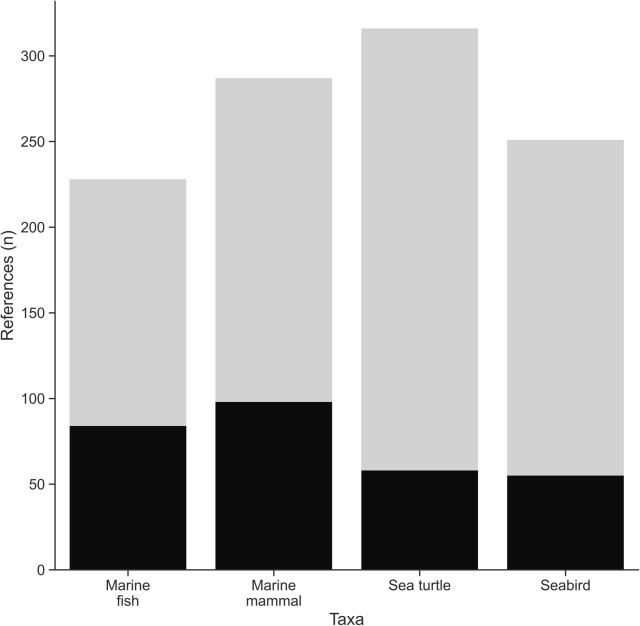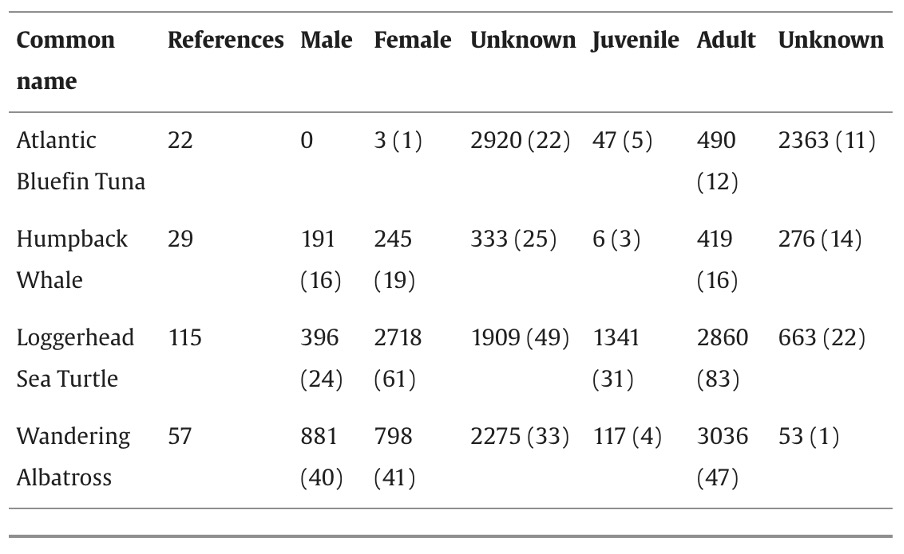ABNJ connectivity marine species management telemetry tracking

Efforts to safeguard marine biodiversity rely on understanding ecological connectivity, or how different areas of the ocean are connected by the movement of migratory and marine organisms. This process plays a critical role in maintaining healthy marine ecosystems by facilitating gene flow, population replenishment, and resilience to environmental changes.
By identifying key habitats and migration corridors, conservationists can prioritize areas for protection and management. This knowledge is particularly crucial in areas beyond national jurisdiction (ABNJ), where many migratory species spend a significant portion of their lives. With a new treaty being negotiated to manage and protect biodiversity in these areas, understanding connectivity is ever more urgent.
The authors of this study performed a literature review of 25 years of accessible data for 173 marine mammal, fish, sea turtle, and seabird species to shed light on the current state of knowledge. They found that published connectivity data and collective knowledge of animal movements varies greatly among marine migratory species. Also, that telemetry is currently the most powerful tool for demonstrating connectivity patterns.
The review also highlighted significant knowledge gaps and limitations of currently available data. For example, there were a greater number of references for sea turtles when compared to the other taxa. They found more information has been collected for all four taxa in the northern hemisphere than in other regions.

Fig. 2 (from the publication). The total number of references included for review that presented processed telemetry data (black) and raw telemetry data (grey) for 173 marine fish, marine mammal, sea turtle, and seabird species.
The authors found the five most frequently mentioned data repositories were OBIS (from 1999) along with other repositories: sea turtle Satellite Tracking and Analysis Tool (from 2002), Seabird Tracking Database (from 2004), and Dryad and MoveBank (both from 2008). However, only 11 % of the included references, published between 1995 and 2017, contained information on where the data were archived, while all other references did not mention if data were archived or if a data repository was used. This highlights that most available data on connectivity may not be published yet via global databases such as OBIS. Lack of access to data may be impeding informed area-based management of transboundary mobile and migratory species.
The authors acknowledge the challenges in performing this type of multi-taxa literature review. For example, studies frequently omitted key details or results were summarized in a way that prevented further analyses. Also, many studies lack standardized protocols and fail to provide essential details, such as sex, age class, or specific behaviors of tracked animals. Further, the migratory routes and movements of juveniles and adult males were not well-represented within the literature.
Table 1 (from the publication). The number of references included in the literature review, the number of animals reported within these references, by sex and age class (number of references within information in parenthesis), for each case study species. Each reference was reviewed independently for unique individuals, with the potential for individuals reported within more than one reference.

Moving forward, the authors advocate for greater attention on marine connectivity research, increased transparency, and adopting standardized reproducible methods for all tracking data studies. The study reinforces the importance of embracing a culture of data sharing through global platforms like OBIS to enable researchers worldwide to contribute meaningfully to informed management strategies, also in ABNJ.
Full publication available at:
Kot, C.Y., S.E. DeLand, A-L. Harrison, A. Alberini, H. Blondin, M. Chory, J. Cleary, C. Curtice, B. Donnelly, E. Fujioka, A. Herrero Palacio, E. Heywood, E. Mason, D. Nisthar, G. Ortuño Crespo, S. Poulin, M. Whitten, C. Woolston, D.C. Dunn and P.N. Halpin. 2023. Synthesizing connectivity information from migratory marine species for area-based management. Biological Conservation, Volume 283.
N.B. Primary support was from the Global Ocean Biodiversity Initiative (GOBI) grant from the International Climate Initiative (IKI). The German Federal Ministry for the Environment, Nature Conservation and Nuclear Safety (BMU) supports this initiative on the basis of a decision adopted by the German Bundestag.
Cover © Leatherback turtles, U.S. Fish and Wildlife Service SE Region, Wikimedia Commons

